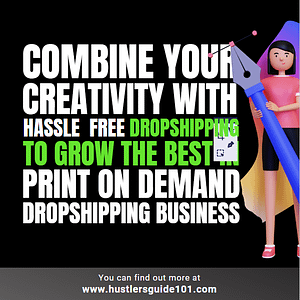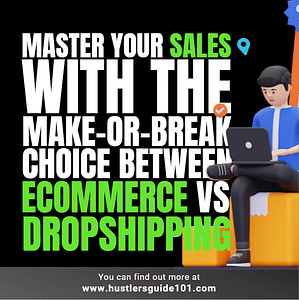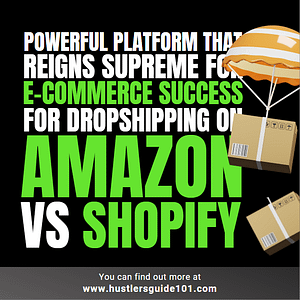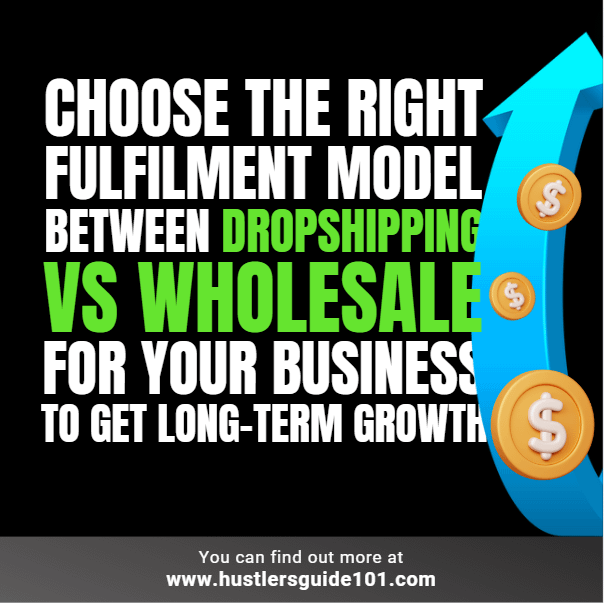
If you’re starting a new business or looking to choose the best in dropshipping and wholesale as your business model, I have some key factors for you. Plus, I will tell you how to get started with dropshipping and wholesale models.
Dropshipping has gained immense popularity in recent years due to its low entry barrier and minimal capital investment. In contrast, wholesale involves purchasing products in bulk at a discounted price and storing them in your own inventory.
So, whether you’re a budding entrepreneur or an existing business owner looking to explore new opportunities, I will help you understand the pros and cons of each and which model best aligns with your business goals and resources.
What Is Dropshipping?
With dropshipping, you can sell products without ever having to handle inventory or shipping, so there is no headache of out-of-stock and restocking items. Wondering what a dropship order is? In dropshipping, a customer places an order on your online store. That order is forwarded to the Supplier, which is you!
Alright, then you forward the order and customer information to a third-party supplier, who could be a manufacturer, storekeeper, or wholesaler. By this point, your work is done. The supplier fulfills the order by picking, packing, and shipping the product directly to the customer.
But after a successful order fulfillment, you earn the difference between the price you charged the customer and the wholesale price you paid the supplier.
While you read this, don’t forget to check TEMU dropshipping if you want to make the right decision. TEMU is okay but what about Amazon Dropshipping and Shopify Dropshipping? Well, I have got you covered on this too.
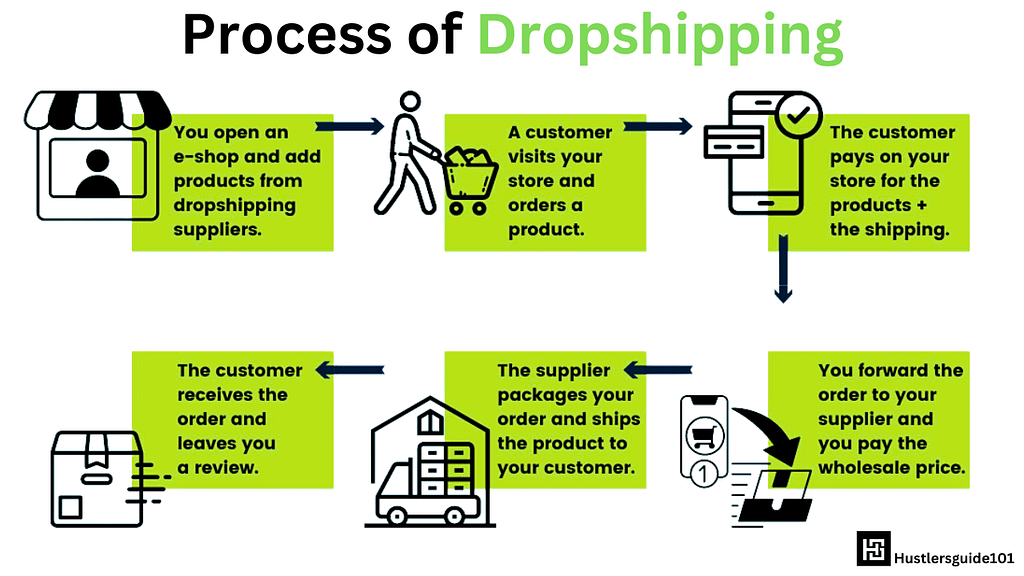
Pros of Dropshipping
Reduced Beginning Expenses:
Well, one of the primary benefits of dropshipping is the low barrier to entry, which makes it attractive for students and no-investment seekers. You don’t need a large amount of capital to start because you don’t have to purchase inventory upfront.
Focus On Building Business:
The cut in inventory management also helps you focus your resources on marketing and building your brand’s reputation. You can spend money on the right marketing tools for inbound marketing or just invest your time improving your business. This allows you to adapt to market trends and scale your business rapidly.
Flexibility
Since you don’t have to handle inventory, you can easily test different products and niches without the risk of being stuck with unsold items. Because if items are not sold, you won’t have to waste them or just use them on yourself. You can test the market and see what resonates with your customers.
Plus, dropshipping does not constrict storage space. Without worrying about keeping track of a physical inventory such as T-shirt printing machines for small businesses, you can offer a wide range of items. This enables you to serve a larger clientele and maybe boost revenue.
Scalability:
Well, if you’re a small business, I think this advantage will hold for you. If your firm succeeds, you won’t have to worry about hiring more employees or running a bigger warehouse. Your company may grow really easily since the supplier takes care of the fulfillment.
As for bigger-scale businesses, you may need to hire a freelancer or someone to manage your social media platform and marketing responsibilities and sometimes to track how the parent dropshipping company is doing with you.
Time-Saving:
Like I said earlier, you don’t have to deal with packaging and shipping because dropshipping frees up your time to focus on marketing, customer service, and growing your business.
Also, Dropshipping allows you to run your business from anywhere with an internet connection, so the entire world becomes your office, giving you the freedom to work on your own schedule and location. Bingo!
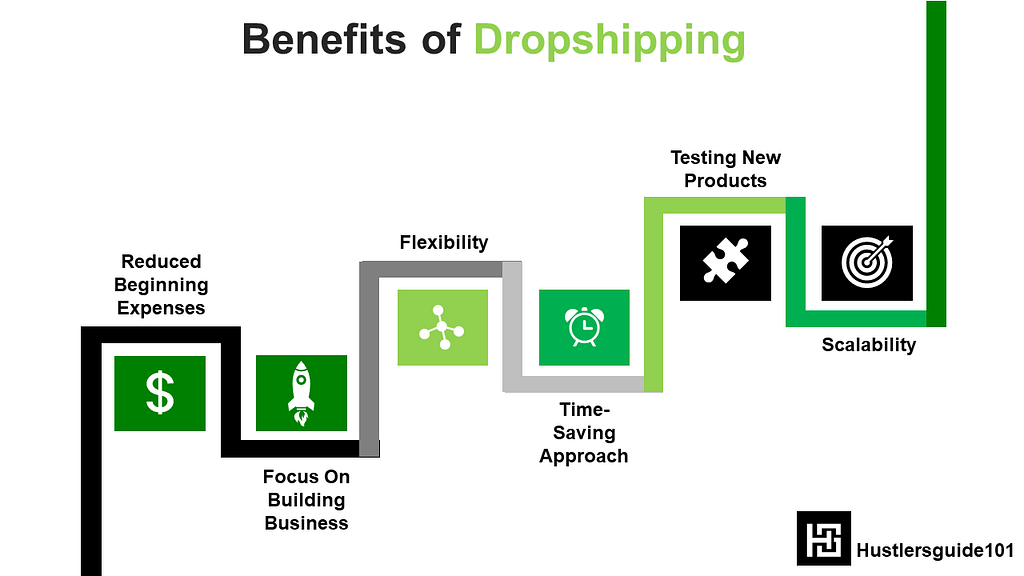
How do print-on-demand dropshipping work and what are the differences? I have them all for you.
Cons Of Dropshipping
Higher Price Cuts Customers:
One of the main challenges you will face with Dropshipping is the lower profit margins compared to wholesale. You won’t benefit from bulk discounts since you’re not buying in bulk.
This means you’ll have to sell products at a higher price to make a decent profit which may not digest to some of customers. Also, since you’re competing with other drop shippers selling the same products, it can be tough to maintain high profit margins.
No Control Over Process:
Because you don’t have control over the shipping process, you may face issues with delayed shipments or poor-quality packaging, which can negatively impact your customer experience. And by no-control, I also mean that you CANNOT sell items with your branding. So, no customization, no logo, and no signatures.
Why these custom experience matters like small business freebies, package ideas or thank you notes to appreciate support? Well, they can build a true relation with your customers.
If dropshipping has caught your interest, I am sure you would also be interested to know about E-Commerce too. So don’t forget to check out my blog Ecommerce Vs Dropshipping- What To Choose In 2024?
What is Wholesale?
Wholesale refers to selling goods in large quantities to businesses, typically at a discounted price. The Wholesalers purchase products in large volumes directly from manufacturers or other suppliers. Then, the lower cost wholesalers get from buying in bulk translates to discounted retail prices.
At this stage, retailers need to make a profit while still offering competitive prices to consumers. However this model requires more upfront investment but gives retailers more control over their products, processes, and pricing.
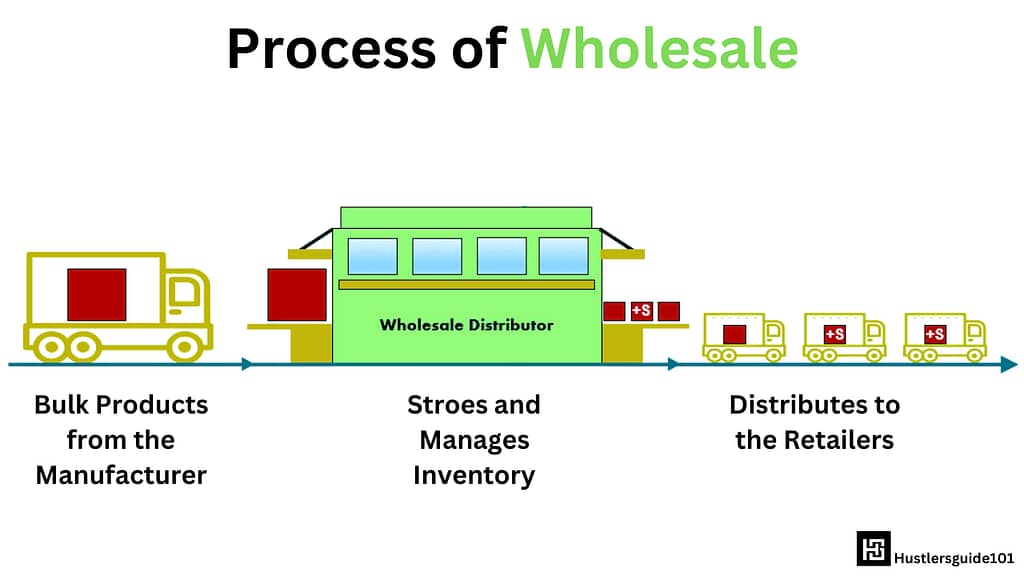
Did You See That? Now you can see a relation and connection between dropshipping and wholesale. Wait, where? Look, Dropshippers can source their products from wholesalers. Wholesalers don't typically dropship themselves, but they can be a good source of inventory for dropshipping businesses.
Pros Of Wholesale
Increased Sales and Reach:
Wholesalers can reach a much larger customer base compared to selling directly to individual consumers. They sell to retailers with their established customer base, significantly expanding the product’s reach and potential sales volume.
Lower Costs Per Unit:
It’s pretty obvious that you get a good discount when you purchase something in bulk. By buying in bulk quantities, wholesalers benefit from economies of scale.
Manufacturers typically offer discounted prices for larger orders, which translates to a lower cost per unit for the wholesaler. This increased profit margin can be passed on to retailers or used to boost the wholesaler’s own profits.
Storage and Distribution Expertise:
Wholesalers typically have established storage and distribution networks. They can efficiently manage large quantities of inventory and deliver them to retailers across a wide geographic area, ensuring a smooth and reliable supply chain.
Plus, Wholesale businesses often deal with fewer customers, who are retailers, than those selling directly to consumers, which reduces complexities in the business process.
Reduced Risk of Unsold Inventory:
Unlike retailers who sell directly to consumers, wholesalers are less likely to get stuck with unsold inventory. Retailers are responsible for managing their inventory levels and dealing with slow-moving products.
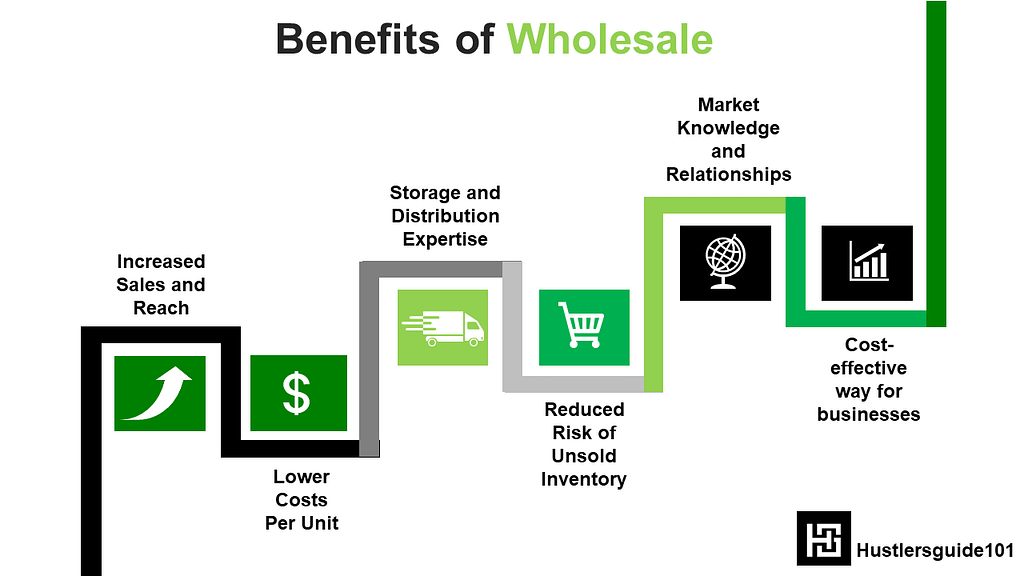
Cons Of Wholesale
Initial Investment:
One of the main challenges with wholesale is the higher upfront investment required. Purchasing bulk inventory requires more capital than drop shipping, which can be a barrier for some entrepreneurs, especially students and those just starting.
Another factor regarding cost is the Wholesalers’ minimum order requirements from manufacturers. This can bother new businesses or those introducing new product lines, as they might be stuck with excess inventory if they can’t sell the minimum required amount.
Require Storage and Resources:
With wholesale, you are responsible for storing and managing inventory, which can be time-consuming and may require additional resources. Sometimes you have to add extra labour for stocking and managing the products since there are so many of them.
Reliance on Retailers:
The success of a wholesale business is heavily dependent on the performance of its retailer network. If retailers experience slow sales or go out of business, it can significantly impact the wholesaler’s sales and revenue.
Now if you are thinking whether Amazon FBA and Dropshipping is the same thing, I have got you covered on this too.
How to get started with dropshipping or wholesale?
Getting started with dropshipping or wholesale is relatively simple but not that simple because it requires careful planning and execution. I have shortlisted some steps to get started:
1. Research and select your niche: First, don’t follow a niche blindly. Understand what you’re good at and identify a profitable niche market that aligns with your interests and target audience. Go through success stories and conduct thorough market research to understand customer demand, competition, and trends.
2. Choose your business model: Evaluate the pros and cons of dropshipping and wholesale based on your goals, resources, interests, and preferences. Consider the factors I discussed earlier to make a better decision.
3. Set up your online store: Choose an e-commerce platform that best suits your needs and set up your online store. Customize the design, layout, and branding of your landing page to create a unique and engaging shopping experience for your customers.
4. Source suppliers: If you choose dropshipping, research and select reliable suppliers. Use supplier directories like Amazon to find suppliers with a good track record. If you choose wholesale, reach out to manufacturers or distributors to negotiate pricing and establish partnerships.
5. List and market your products: Add products to your store and optimize their descriptions, images, and pricing. Implement marketing strategies to drive traffic to your store, such as social media marketing, influencer collaborations, content marketing, and paid advertising.
6. Optimize operations: Streamline your operations by integrating tools for inventory management, order fulfillment, and customer support. Continuously monitor and analyze your business performance to identify areas for improvement.
7. Provide exceptional customer service: Focus on delivering excellent customer service to build trust and loyalty. Respond to customer inquiries promptly, address any issues or concerns, and strive to exceed customer expectations.
Note for Large Businesses: You can even combine dropshipping and wholesaling in your business. This allows you to offer a wider range of products and potentially benefit from both lower startup costs and higher profit margins. However, it can also be more complex to manage.
FAQ: Dropshipping and Wholesale
How Much Time Commitment is Involved with each Method?
Dropshipping can be more time-consuming for marketing and customer service because you don’t control fulfillment. Wholesaling requires time for inventory management and order fulfillment.
Is Wholesaling Better for Established Businesses with Consistent Demand?
Yes, wholesaling can be a good option for established businesses with predictable sales and the space to store inventory.
Is Dropshipping a Good Fit for Selling Fragile or Perishable Items?
No, dropshipping can be risky for fragile or perishable items because you have less control over storage and shipping conditions, which could damage the product before it reaches the customer.
Conclusion: Dropshipping vs Wholesale
Well, in the end, I would say that each model has its own pros and cons. You can determine which model aligns best with your business goals by considering capital, profit margins, control over products, shipping times, inventory management, and scalability.
You can build a successful dropshipping or wholesale business by providing exceptional customer service, delivering quality products, and continuously adapting to market trends. If you’re on a large scale, you can use both dropshipping and wholesale for your business. Good luck with that!




